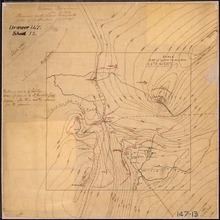0 unknown Result Union victory | Date 18 June 1862 | |
 | ||
Location Cumberland Gap, Virginia, United States Similar American Civil War, Defense of Cincinnati, Battle of Munfordville, Confederate Heartland Offensive, Jackson Expedition | ||
The June 1862 capture of the Cumberland Gap was a Union victory during the American Civil War leading to Union occupation of the Cumberland Gap for three months.
Contents
Background
The Confederates held a long line of fortifications across Kentucky, Tennessee and into Missouri under Albert Sidney Johnston. The center of Johnston's defenses was Bowling Green, KY with the left flank anchored at Island No. 10 on the Mississippi River and the right held by Brig. Gen. Felix Zollicoffer at the Cumberland Gap.
In early 1862 the Union Army had met with great success in the Western Theater. A string of victories at Mill Springs, Fort Donelson and Island No. 10 had broken the Confederate defenses at several key points.
Union
Confederate
Campaign against the Cumberland Gap
In March 1862 Brig. Gen. George W. Morgan sent a brigade under Brig. Gen. Samuel P. Carter against the eastern end of the Confederate defenses at the Cumberland Gap. These defenses were now held by Col. James Edward Rains after Zollicoffer's defeat and death at Mill Springs. The Confederate works were considered too formidable to be taken by direct assault and Carter's force lacked sufficient artillery to match the well placed Confederate batteries.
By April, General Morgan was moving against the gap with the remaining three brigades of his division. Morgan's force now included the brigades of Carter, James G. Spears, John F. DeCourcy and Absalom Baird along with a brigade of artillery and cavalry. Meanwhile, Brig. Gen. Carter L. Stevenson brought up the remaining brigades of Seth Maxwell Barton and T.H. Taylor to Col. Rain's defense. Morgan proposed to Maj. Gen. Don Carlos Buell that Chattanooga be threatened in order to force the Confederates to pull their strength away from the Cumberland Gap. At the same time General Edmund Kirby Smith, Confederate commander in eastern Kentucky, proposed a threat against Nashville to draw Union forces away from the gap. Only Morgan got his wish. A Union division under Brig. Gen. James S. Negley attacked Chattanooga on June 7, 1862. This demonstration against Chattanooga was small but it proved the Union forces could strike where they wanted. It was enough for Kirby Smith to reconsider Stevenson's position at the Cumberland Gap.
The Union advance against the gap was made over difficult terrain, particularly in regards to the artillery brought with. Morgan was also forced to abandon his supply lines and rely solely upon foraging. Through two weeks of maneuvering through enemy territory Morgan reached the gap without losing a single man. Kirby Smith ordered Stevenson to withdraw to Chattanooga in response to Negley's attack. On June 18 Morgan reported to General Buell he had taken control of the "American Gibraltar".
Aftermath
General Morgan praised his division for the efficiency of their actions in the face of logistical difficulties. Even though he held a strong defensive position, Morgan was far from any Union base with no established supply lines. His reports to Maj. Gen. Henry W. Halleck however remained full of optimism. As late as August, 1862 Morgan reported he had no intentions of evacuating the gap and "if the enemy attacks he will be crushed". Kirby Smith's attention had been devoted to securing Chattanooga. It was not until Confederates under Braxton Bragg invaded Kentucky that Morgan found himself facing a serious Confederate threat. Morgan was forced to abandon the gap in September 1862, but managed to conduct a masterful withdrawal through enemy territory. The Cumberland Gap would remain in Confederate control until Maj. Gen. Ambrose Burnside recaptured it in 1863.
